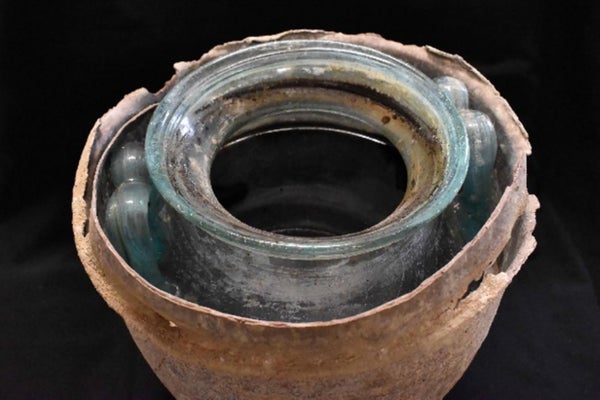Someone with an amputated right arm showing where they are sensing a certain temperature in their phantom hand
ALAIN HERZOG
People with amputated arms can be made to feel temperature or material changes in their phantom hand, a discovery that could help equip prosthetics with a more heightened sense of touch.
After an amputation, some people experience the sensation that their missing arm or leg is still attached, known as phantom limbs. To learn more about these limbs, Solaiman Shokur at the Swiss Federal Institute of Technology in Lausanne and his colleagues looked at 26 people who lost at least part of one of their arms in an accident and reported experiencing phantom hands.
The researchers placed a device with a changeable temperature on these participants’ residual limbs. They then applied three temperatures: 25°C (77°F), 32°C (89.6°F) and 37°C (98.6°F), and the participants reported whether they could feel warmth in their phantom hands and, if so, if they could tell the temperatures apart.
Seventeen said they felt a change in temperature to their phantom hand when the device was used, which the researchers called phantom thermal sensation. Of these, 15 could differentiate between the three temperatures. “Our hypothesis is that, after the amputation, nerves continue to grow in the skin,” says Shokur. “By targeting those nerves precisely, we are producing this phantom sensation.”
It is unclear why only 17 of the participants reported feeling the temperatures. “What we have noticed is that many of the people who didn’t show a response had accidents related to fire and so they had their skin burned, and so maybe they lost a lot of sensitivity in their skin,” he says.
In another part of the experiment, the researchers applied a sensor to three materials: glass, copper and plastic. This sensor was connected to the residual arms of nine of the participants with phantom thermal sensation, who were blindfolded. It was initially set at 32°C, the approximate temperature of skin, and then cooled at around the same rate as the temperature of the skin on our hands does when it touches copper, glass or plastic.
The participants identified which of the materials the sensor was touching with a 66 per cent success rate, compared with a 67 per cent success rate when their intact hand touched the materials.
The researchers hope to develop their sensor so it can be applied to the fingertips of prosthetics, enabling people with amputated arms or hands to detect temperatures. This will help people with amputations to avoid burns, as well as making touch feel more natural, says Shokur. “One person told me that they’d love to wear this device while holding their kid’s hand so that they could feel their warmth,” he says.
Topics:














